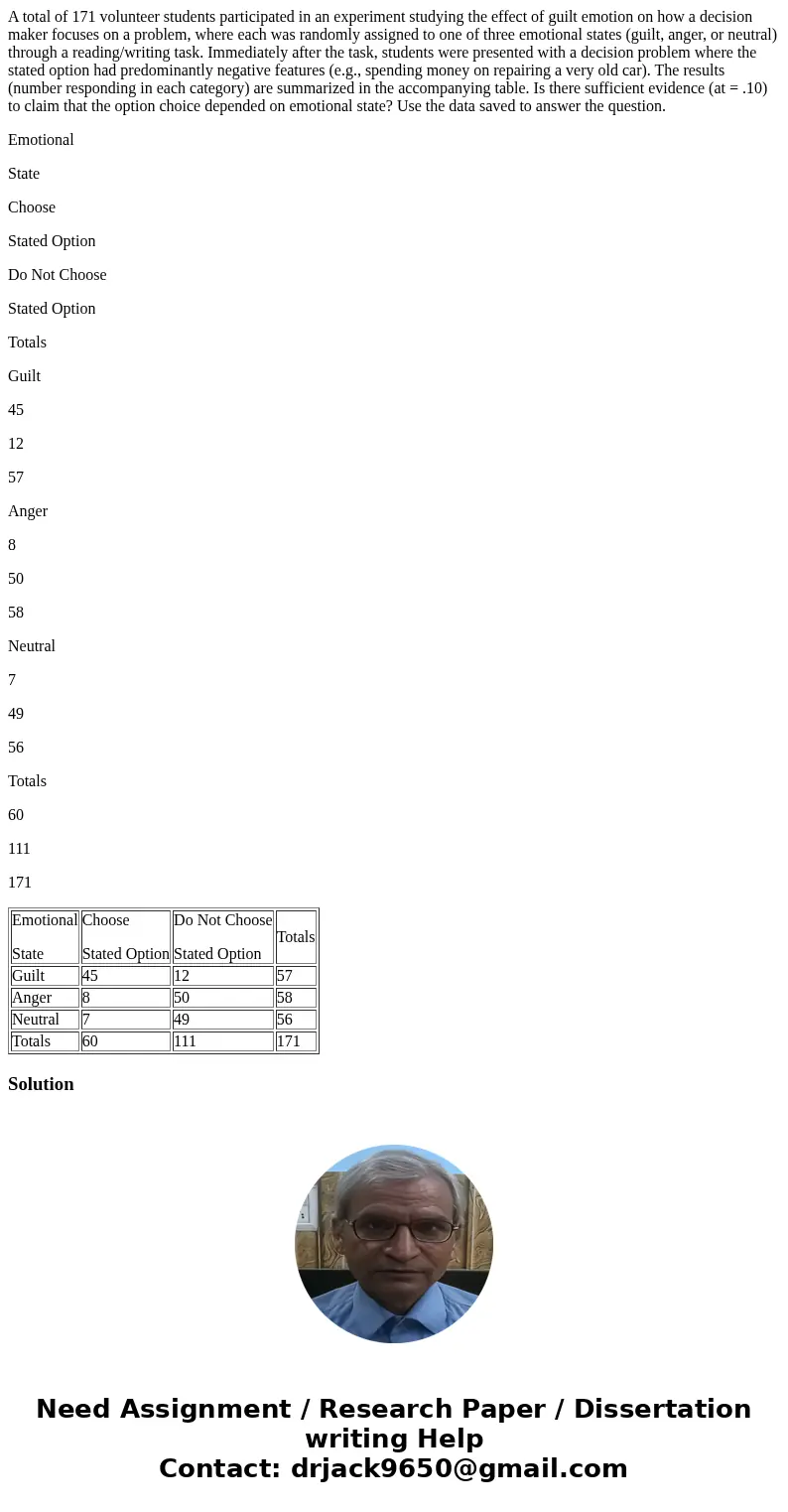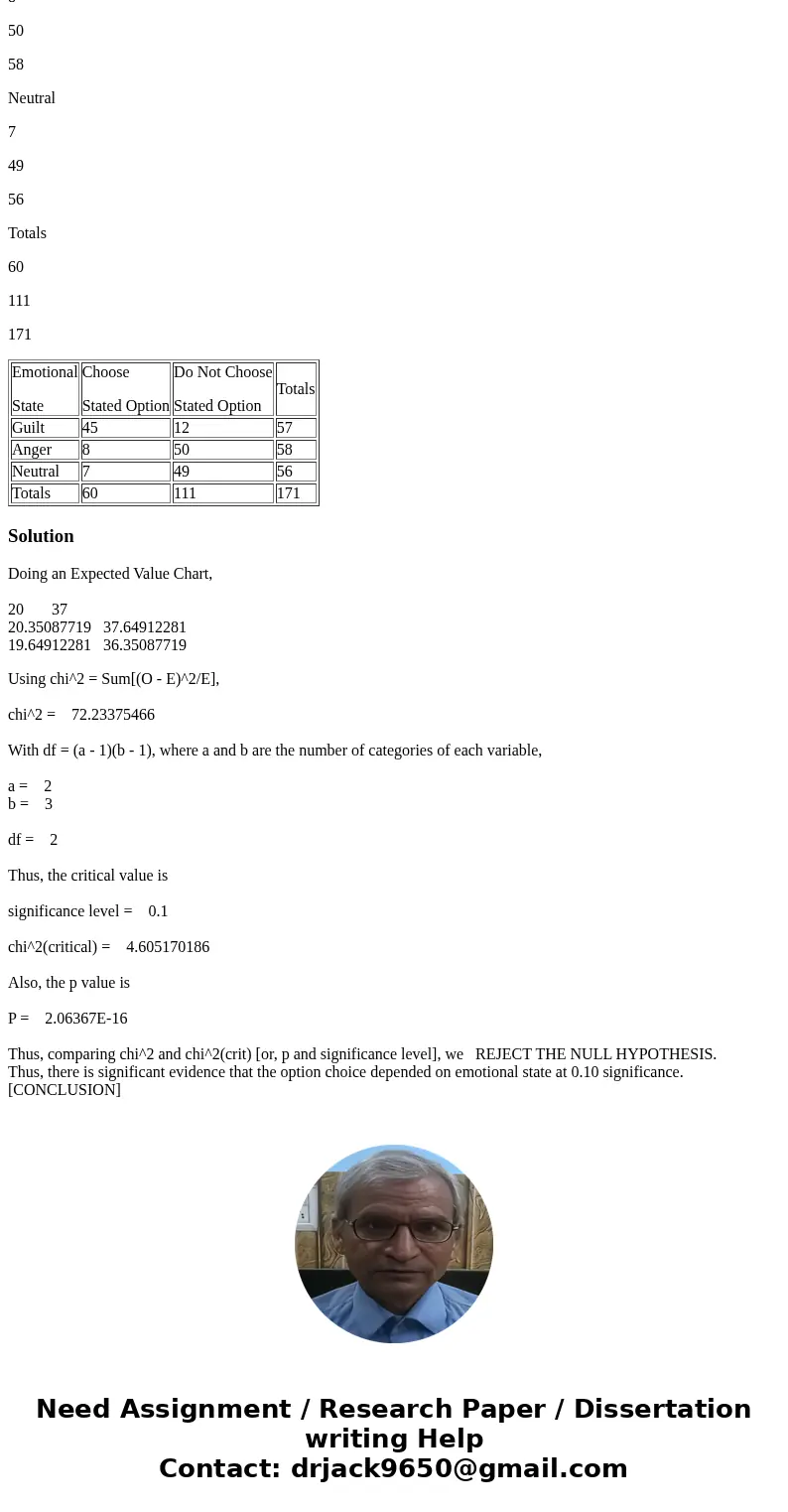A total of 171 volunteer students participated in an experim
A total of 171 volunteer students participated in an experiment studying the effect of guilt emotion on how a decision maker focuses on a problem, where each was randomly assigned to one of three emotional states (guilt, anger, or neutral) through a reading/writing task. Immediately after the task, students were presented with a decision problem where the stated option had predominantly negative features (e.g., spending money on repairing a very old car). The results (number responding in each category) are summarized in the accompanying table. Is there sufficient evidence (at = .10) to claim that the option choice depended on emotional state? Use the data saved to answer the question.
Emotional
State
Choose
Stated Option
Do Not Choose
Stated Option
Totals
Guilt
45
12
57
Anger
8
50
58
Neutral
7
49
56
Totals
60
111
171
| Emotional State | Choose Stated Option | Do Not Choose Stated Option | Totals |
| Guilt | 45 | 12 | 57 |
| Anger | 8 | 50 | 58 |
| Neutral | 7 | 49 | 56 |
| Totals | 60 | 111 | 171 |
Solution
Doing an Expected Value Chart,
20 37
20.35087719 37.64912281
19.64912281 36.35087719
Using chi^2 = Sum[(O - E)^2/E],
chi^2 = 72.23375466
With df = (a - 1)(b - 1), where a and b are the number of categories of each variable,
a = 2
b = 3
df = 2
Thus, the critical value is
significance level = 0.1
chi^2(critical) = 4.605170186
Also, the p value is
P = 2.06367E-16
Thus, comparing chi^2 and chi^2(crit) [or, p and significance level], we REJECT THE NULL HYPOTHESIS.
Thus, there is significant evidence that the option choice depended on emotional state at 0.10 significance. [CONCLUSION]


 Homework Sourse
Homework Sourse